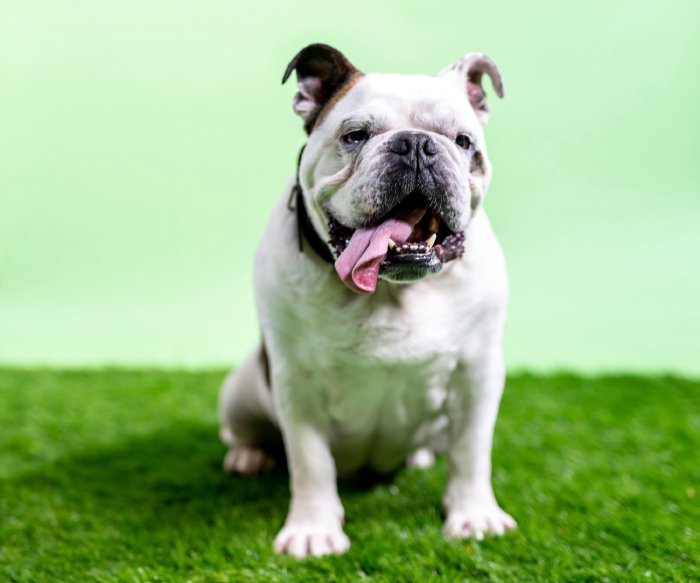Let's Learn to Sit
Training a new puppy to sit is one of the fundamental commands that can serve as a building block for future training.
Here’s a super simple guide to get you started!

Step 1: Get Your Puppy’s Attention
- Focus: Puppies are easily distracted, so choose a quiet environment initially. Use a cheerful voice to call their name or make a sound that gets them to look at you.
- Engagement: Engage with your puppy by getting down to their level. This makes you less intimidating and more approachable, encouraging your puppy to focus on you.
Step 2: Use a Treat as a Lure
- Treat Selection: Use small, soft treats that your puppy finds irresistible. The treat should be small enough to be consumed quickly to maintain the flow of training.
- Positioning: Hold the treat between your fingers in such a way that your puppy can smell and see it but can’t grab it from you.
Step 3: Guide the Sit
- Luring Movement: The motion of moving the treat over their head should be smooth. If your puppy tries to jump up or backs up instead of sitting, try positioning yourself against a wall to limit their backward movement.
- Physical Assistance (if needed): If your puppy struggles to understand the motion, you can gently press down on their rear end while luring their head upwards. However, most puppies will naturally sit when their head is moved in the correct motion.
Step 4: Introduce the Command
- Timing: Say the command “Sit” right before or as your puppy begins to lower their bottom. This helps them associate the action with the command.
- Consistency: Always use the same word in the same tone. Consistency helps prevent confusion and strengthens the association.
Step 5: Reward the Sit
- Immediate Reward: The reward must come immediately after the sit, within a second or two, so your puppy makes the connection between the action and the treat.
- Praise: Along with the treat, offer enthusiastic verbal praise like “Good sit!” to reinforce the behavior. Over time, praise can become as rewarding as treats.
Step 6: Practice and Patience
- Short Sessions: Puppies learn best in short bursts. Multiple short sessions are more effective than one long session.
- Repetition: Repetition is crucial, but avoid too many repetitions in a row to prevent boredom. Keep it fun and engaging.
Step 7: Gradual Fade of the Lure
- Hand Signal: Start using a hand signal (like an upward motion with your hand) along with the verbal command. Over time, this can replace the lure.
- Random Rewards: Begin to reward intermittently. This means not giving a treat every single time but always offering praise. Intermittent reinforcement can strengthen the learned behavior.
Step 8: Practice in Different Locations
- New Environments: Once your puppy is reliably sitting on command at home, start practicing in different locations with more distractions to generalize the behavior.
- Incremental Difficulty: Increase the level of distraction gradually. Don’t expect your puppy to perform perfectly in a new, highly distracting environment right away.
Key Tips:
- Consistency is Key: Use the same command and reward system every time to avoid confusing your puppy.
- Positive Reinforcement: Focus on rewarding the behaviors you want rather than punishing the ones you don’t. Positive reinforcement builds trust and makes learning enjoyable.
- Be Patient: Every puppy learns at their own pace. Offer lots of encouragement, and never use punishment if they don’t get it right away.
- Keep it Positive: Always end training sessions on a positive note, with a success or an easier command they already know, to keep their confidence up.
With patience, consistency, and positive reinforcement, your puppy will soon master the “Sit” command, paving the way for more advanced training and a well-behaved companion.